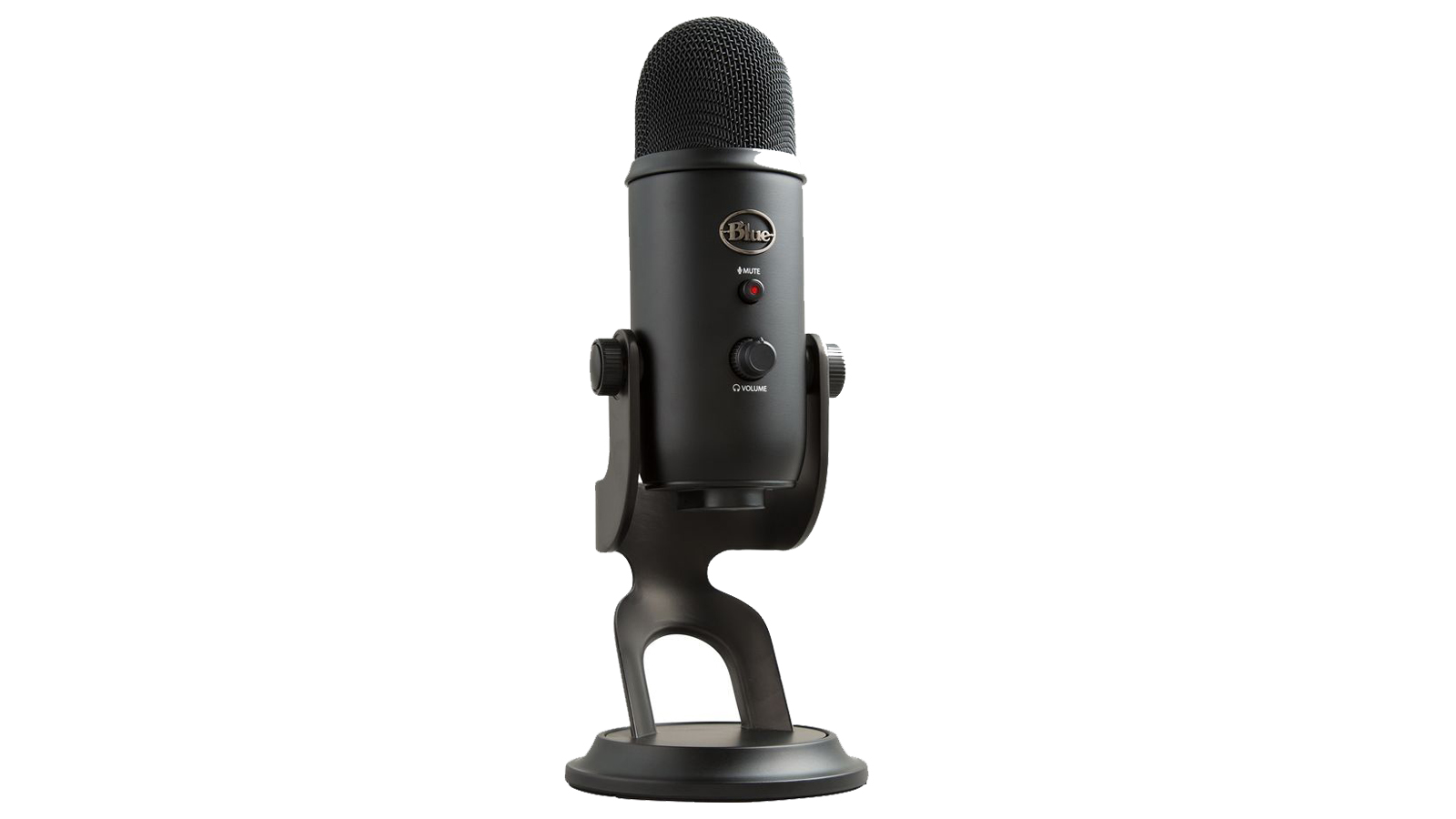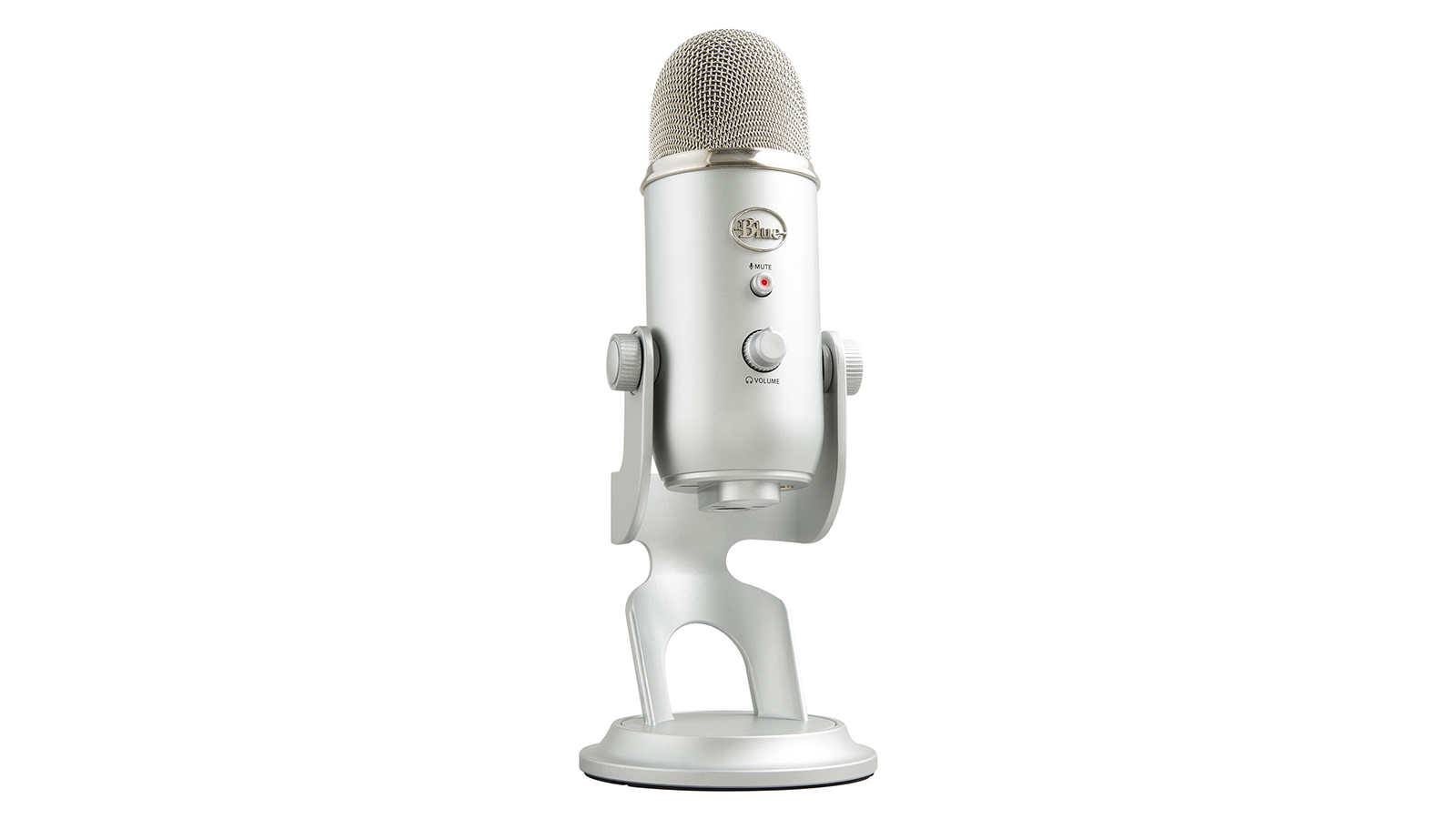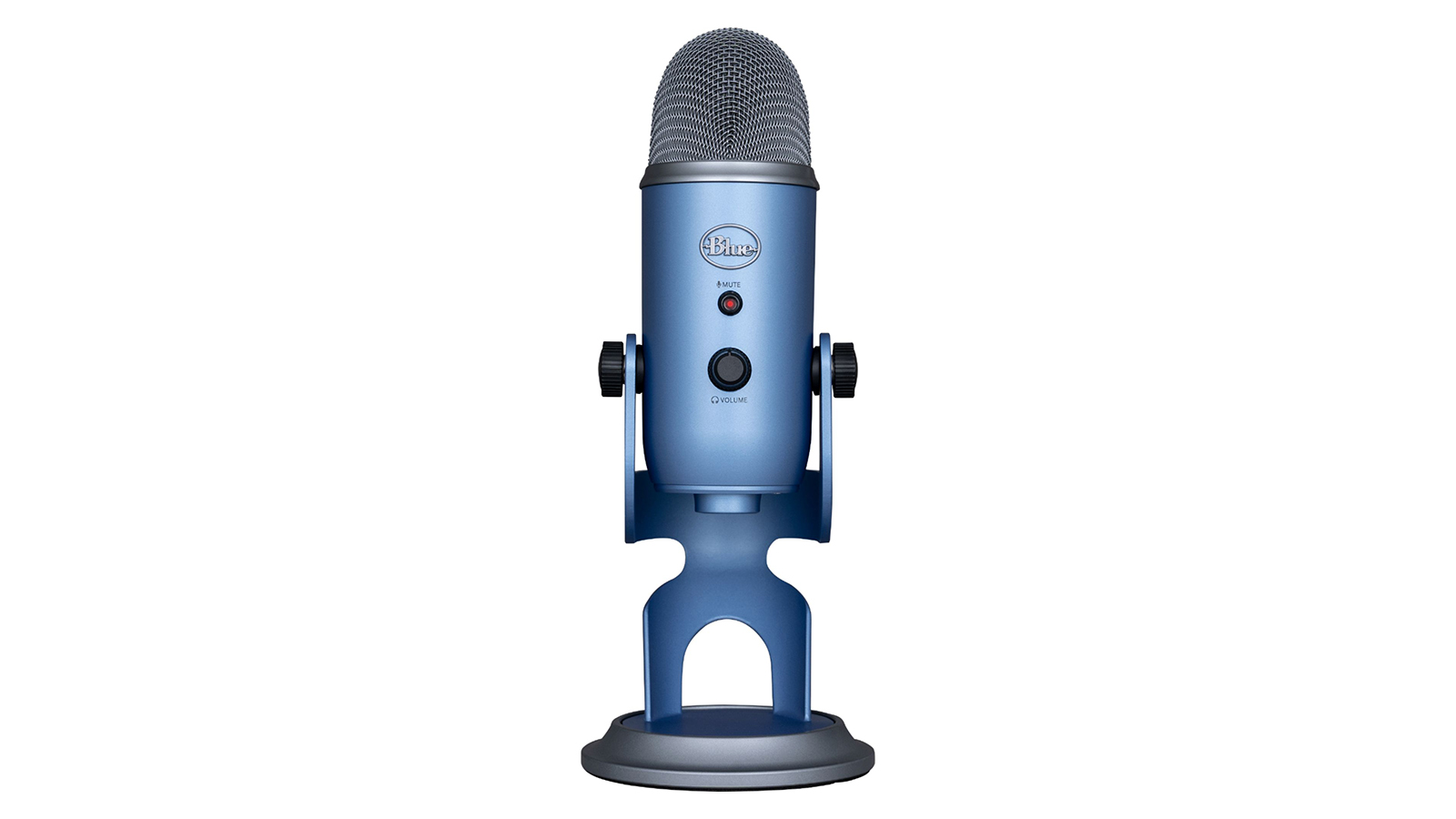Blue Yeti vs AT2020: what's the difference between these two affordable USB mics?
We’ve tested both for features, build and tone to help podcasters and vloggers decide which is the right mic for their needs

Shopping for a great quality USB microphone that isn't going to send your bank balance into meltdown? If so, two microphones are sure to have made your shortlist – the best-selling Blue Yeti and the evergreen Audio Technica AT2020USB+.
Both are exceptionally good side address USB condenser mics that are long on features and short on price. It's true that you're unlikely to find either in a pro studio, instead they're geared towards helping amateurs with pro aspirations in the podcasting and vlogging worlds get the best possible sound with the least amount of bother.
In many ways they're very similar products that have been developed to address the same needs and requirements. However, there are some key differences, so which is the best solution for you? Let's answer the Blue Yeti vs AT2020 debate right now.
Blue Yeti vs AT2020: At a glance
Blue and Audio Technica both market these mics as superb podcasting and vlogging tools. The Yeti is described by Blue as a premium vocal broadcast mic, whereas Audio Technica is a little more ambitious with the AT2020USB+. It suggests it is also capable of recording a wide variety of music instruments too, such as acoustic guitar, drums and piano.
Technically, there's no reason why the Yeti cannot tackle similar work, so perhaps it's a quirk of marketing. However, there is one reason why you may favour the AT2020USB+ over the Yeti for non-vocal work, which we'll come onto in a minute.
Both mics are attractive, but their appearances are totally different. The AT2020USB+ looks sleek, professional and unassuming to the point where some users will think it's a bit dull. Frankly, it just looks like any other microphone.
Unless, of course, that other microphone is a Blue Yeti. In common with many Blue products, the Yeti is a visual retro-futuristic riot. Its quirky appearance, including its bundled anthropomorphic stand, is characterful and fun to the point where some users may think it's a bit OTT.
Want all the hottest music and gear news, reviews, deals, features and more, direct to your inbox? Sign up here.
Does it really matter what a mic looks like? Well, yes. YouTubers are successful because their channels are often extensions of their larger-than-life personalities. Do they want a microphone that will detract from that, or a product that can enhance it? Hello Blue Yeti.
On the other hand, if you're a corporate suit spending much of your time on Zoom, or a studio pro needing to impress talent, you may favour the less gimmicky, more grown up looking AT2020USB+.
Blue Yeti
- Read the full Blue Yeti review
- Price: $129/£119/€139
- Weight inc. stand (g)/(lbs): 1.55 kg/3.4 lbs
- Height inc. stand (mm)/(in): 295 mm/11.6 in
- Width inc. stand (mm)/(in): 125 mm/4.92 in
- Depth inc. stand (mm)/(in): 120 mm/4.72 in
- Transducer Type: Condenser (three capsules)
- Polar Pattern: Cardioid, Bidirectional, Omnidirectional, Stereo
- Frequency Range: 20Hz – 20kHz
- Maximum Sound Pressure: 120 dB SPL (THD: 0.5% 1kHz)
- Sample Rate: 48kHz
- Bit Rate: 16-bit
- Output Connectors: 3.5 mm headphone jack, USB
- Colour: Midnight Blue, Black, Silver
- Contact: Blue
Audio Technica AT2020USB+
- Read the full Audio Technica AT2020 review
- Price: $149/£115/€138
- Weight (g)/(lbs): 386 g/1.687 lbs
- Height (mm)/(in): 162 mm/6.38"
- Width (mm)/(in): 52 mm/2.05"
- Depth (mm)/(in): 52 mm/2.05"
- Transducer Type: Condenser
- Polar Pattern: Cardioid
- Frequency Range: 20Hz – 20kHz
- Maximum Sound Pressure: not specified
- Sample Rate: 44.1/48kHz
- Bit Rate: 16-bit
- Output Connectors: 3.5 mm headphone jack, USB
- Colour: Dark grey
- Contact: Audio Technica
Blue Yeti vs AT2020: Hardware & features

The feature of note for both of these mics is their USB connectivity. This makes them very easy to set up and does away with the need for a separate audio interface, which saves time, space, expense and, ultimately, a whole load of potential hassle.
However, pros will miss the benefits and advantages of an XLR socket. Granted, setting up XLR mics is a little more involved but it does allow for longer, quieter, cable runs and added versatility. For example, it's not impossible to record with two or more USB mics using macOS or Windows, but it is clunky. For multi-mic setups, XLR is definitely the way to go.
Fortunately, most AT2020USB+ users will be flying solo so this isn't a concern, but give it some thought if your podcast or vlog regularly features guests. Yeti users can switch polar patterns to pick up nearby guests, a useful feature that we'll come on to.
Both mics feature a headphone out for monitoring plus a headphone volume control. Usefully, the AT2020USB+ also has a mix control dial, which enables you to monitor what the mic is picking up, as well as hear audio from your computer at the same time, a very useful feature for vocalists. Turning the mix control dial will adjust the balance between the two.
The Yeti features a gain level dial plus a mute button, which is an essential feature for video conferencing, and a bit of an oversight by Audio Technica. You can, of course, usually mute from your computer's keyboard but it's very convenient to be able to do this from the mic itself.
The Yeti's pièce de resistance is its switchable polar patterns, made possible by its triple condenser capsule array. It's possible to select from cardioid, omnidirectional, stereo and bidirectional.
Both the Yeti and the AT2020USB+ ship with mic stands. The Yeti's stand is a heavy, gargantuan affair that, front on, makes it resemble the human form or, if you squint hard, a Yeti. The AT2020USB+ comes with a more standard-looking mini tripod. Both mics have thread mounts, making it possible to support them on any stand or boom.
Bundled with the Yeti is Blue Voice, a comprehensive suite of software audio effects, filters and samples but it's not a requirement for recording.
Winner: The Yeti's switchable polar patterns and mute button make it the best choice here.
Blue Yeti vs AT2020: Build quality & design

There's no getting away from the fact that the appropriately named Yeti is huge compared with the diminutive AT2020USB+. Mounted on its quirky stand, it stands tall at 295 mm / 11.6" and weighs in at 1.55 kg / 3.4 lbs. That's substantial.
In comparison the AT2020USB+ is 162 mm / 6.38" tall and just 386 g / 1.687 lbs in weight, which begs the question, does size matter? It depends. If you have the desk space, the Yeti is going to feel pretty planted, which is a good thing. Its height may place it closer to your mouth too, which is another bonus.
However, its physical heft does have some drawbacks. YouTubers may object to their faces being obscured by such a large mic, it's hardly portable, it's heavy to support securely from a flimsy boom arm and it's not the easiest mic to place accurately when recording other instruments.
Both mics are made with robust cast metal housings, there's no plastic in sight. They've both been around, in some form, for many years and enjoy a good reputation for reliability.
Switches, dials and knobs are all easily accessible, but it would be nice to see both mics equipped with modern USB-C connectors.
Winner: The AT2020+ is robust enough, yet its smaller form factor makes it easier to live with than the substantial Yeti.
Blue Yeti vs AT2020: Tonal characteristics

The Yeti and the AT2020USB+ share the same broad frequency response from 20Hz to 20kHz, which encompasses the entire range of human hearing. As such, thel both successfully provide a full sonic representation of any sound source, whether that be vocals or a guitar playing. If we can hear a sound, they'll both do a good job of picking it up.
The AT2020USB+ has a very flat frequency response curve, with a touch of boost from around 7kHz. This sonic fingerprint enables it to provide a remarkably accurate representation of a sound source, with little colouration. The slight top end boost should help with vocal clarity.
Of course, the Yeti, with its four polar patterns has four curves to take into account but other than the stereo pattern they all take a similar path. All three exhibit a cut in the mid-highs – the 2 – 4 kHz region – an important area for vocals, which may slightly hinder clarity and accurate timbre.
Both the AT2020USB+ and the Yeti exhibit smooth high-end and low-end roll-off, which sounds undesirable but will actually improve noise cancellation and harshness. Good traits for a vocal mic.
Winner: The AT2020USB+ is the winner here because of its relatively flat frequency response that'll be a joy to EQ. Where it deviates from flat, it does so for all the right reasons.
Blue Yeti vs AT2020: In use

If you want a mic that you can plug straight into your computer and start recording almost immediately then neither of these mics will disappoint. The only thing you'll need to do is set the gain level, and you're off.
In order to set the gain for the AT2020USB+ you'll have to adjust and monitor it from within your DAW or your computer's sound preferences. It's not a biggie but it's a shame that Audio Technica didn't equip this entry-level mic with an auto level feature.
You can adjust the Yeti's gain using its onboard dial but because there are no level indicators you'll still have to monitor it from within your computer. Again, it would have been nice to see an auto level feature.
Latency-free headphone monitoring is common to both microphones but, as previously mentioned, only the AT2020USB+ provides you with the facility to mix the sound of your mic input with your computer's output.
Where the Yeti does score, and score conclusively, is with its four switchable pickup patterns. The AT2020USB+ has a cardioid pattern, which enables it to pick up sound from the front while rejecting it from the sides and rear. Perfect for most vocal applications.
The Yeti boasts a cardioid pattern too, but also adds the option of stereo, omnidirectional and bidirectional. As the name suggests, stereo captures a wide sound image, making it perfect for recording choirs and musical instruments. Omnidirectional is sensitive to sounds from all around the mic, so it's a great setting for multi-person podcasts. Bidirectional picks up sound from the front and rear, solving the problem of miking up a duet or presenter and podcast guest.
You'll probably rarely use these additional patterns, but when a recording session calls for multiple mics you may just be able to get away with a single Yeti.
Winner: The Yeti, with its four polar patterns, trumps the AT2020USB+.
Blue Yeti vs AT2020: Verdict

Amusingly, the names of these microphones give us a good insight into their characteristics, no doubt just as their marketing teams intended. So, if we put them in a ring, who will win?
In the red corner we have the no-nonsense AT2020USB+. The name may sound like a spare part from an air-conditioning unit, but it befits this mic's sombre looks. Small, tough, resilient, accurate and lightweight, it's no, ahem, lightweight.
In the blue corner we have the charismatic Yeti. Tall, wide and, frankly, a bit porky, this heavyweight is dressed to impress in its fun, retro-inspired getup. Keen to make an impression, the Yeti is, however, far from 'all show and no go'. After all, its three-mic array and four polar patterns give it some serious edge.
For pro users, the omission of XLR will probably rule both mics out, so if it's a feature you can't live without consider the less expensive non-USB AT2020 or the more expensive Yeti Pro. Both have XLR connectors.
If you're looking for the best possible sound quality in a package that's so portable it can quickly be rigged up to record vocals, acoustic guitars, piano, guitar cabs and so on then the AT2020USB+ is a fantastic choice. Its neutral grey look also makes it perfect for corporate meetings and other settings where you need a mic that's going to melt into the background.
The flamboyant, larger-than-life Yeti will colour your sound more than the AT2020USB+, and it loves to hog the limelight. Plonk this on a desk in front of you and it's going to get noticed. In fact, we recommend placing it off to one side so that it doesn't obscure your face, and it's less likely to pick up plosives.
The Yeti can be used to mic up other instruments but in many cases it'll prove too heavy and awkward to do so. Ideally, you'll want to restrict the Yeti to your desk or suspended from a robust boom arm – it's at its best recording vocals.
Where the Yeti wins paws down over the AT2020USB+ is its polar pattern versatility. It's incredibly useful to be able to switch patterns in order to accommodate additional podcast guests, or even an entire choral ensemble. For this reason, we declare the Yeti the winner.
When Simon's childhood classical guitar teacher boasted he 'enjoyed a challenge', the poor man had no idea how much he'd underestimated the scale of the task ahead. Despite Simon's lack of talent, the experience did spark a lifelong passion for music. His classical guitar was discarded for an electric, then a room full of electrics before Simon discovered the joys of keys. Against all odds, Simon somehow managed to blag a career as a fashion journalist, but he's now more suitably employed writing for MusicRadar and Guitar World. When not writing or playing, he can be found terrifying himself on his mountain bike.
